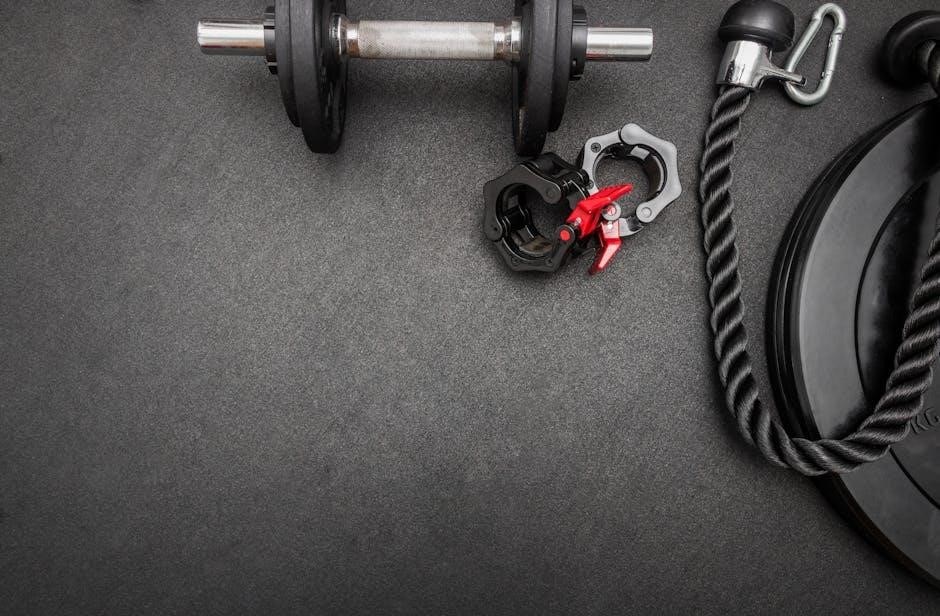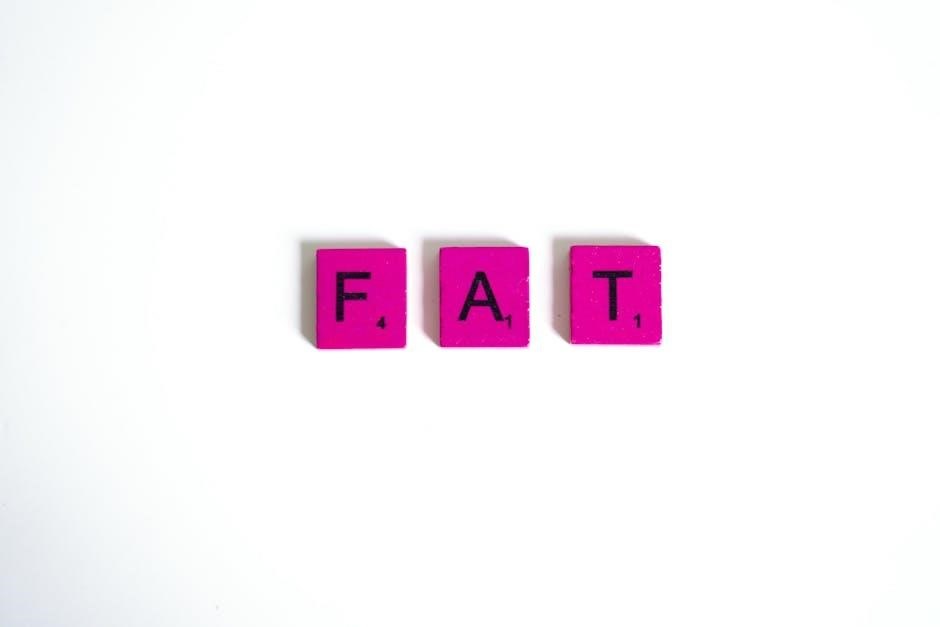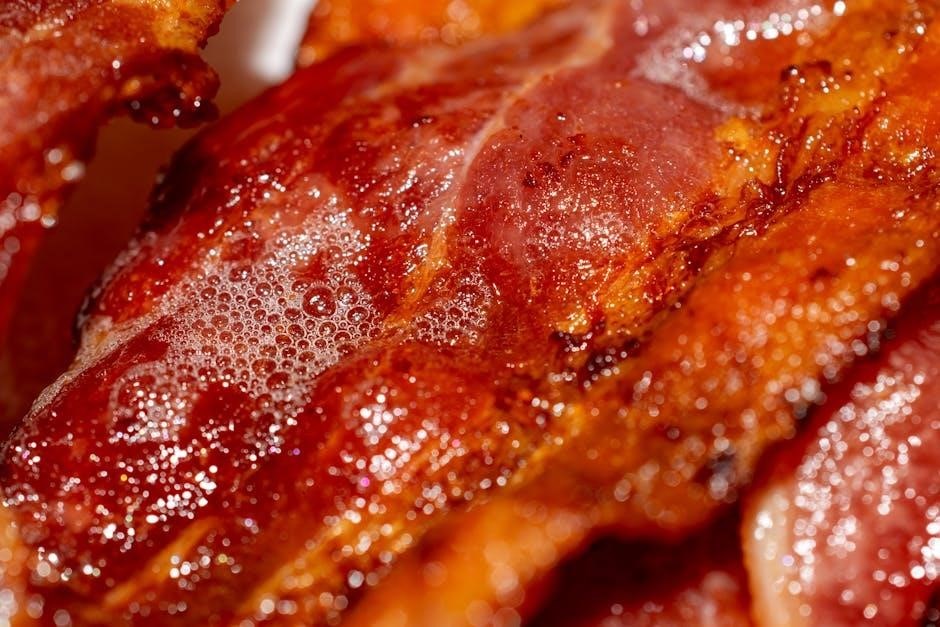Burn Fat Feed Muscle: A Comprehensive Guide
Burn Fat Feed Muscle (BFFM) is a revolutionary approach, detailed in guides like the BFFM PDF, focusing on simultaneously reducing fat and building lean muscle mass for optimal results.
This method emphasizes strategic nutrition and training, moving beyond traditional diet restrictions, and is considered a new bible of fat loss, helping people achieve their dream bodies.
Understanding the Core Principle
Burn Fat Feed Muscle (BFFM), as outlined in resources like the BFFM PDF, centers around the idea that your body isn’t simply in one state – either burning fat or building muscle. Instead, it’s constantly fluctuating between these two processes based on hormonal signals.
The core principle involves manipulating these signals through diet and exercise; It’s about creating an environment where your body is encouraged to tap into fat stores for energy while simultaneously providing the necessary building blocks – primarily protein – to repair and grow muscle tissue. This isn’t about extreme calorie restriction; it’s about strategic fueling.
The BFFM approach acknowledges that lean muscle mass boosts metabolism, supports bones, and enhances overall strength, making it a crucial component of long-term health and body composition.
The Relationship Between Fat Loss and Muscle Gain
Traditionally, it was believed that simultaneous fat loss and muscle gain were mutually exclusive – you either cut calories to lose fat or consume a surplus to build muscle. However, the Burn Fat Feed Muscle (BFFM) philosophy, detailed in the BFFM PDF, challenges this notion.
BFFM posits that a carefully calibrated approach can allow both processes to occur concurrently, particularly for individuals new to training or those returning after a break. This relies on optimizing hormonal responses through precise macronutrient intake and strategic exercise.
Building muscle increases metabolic rate, aiding fat loss, while reducing body fat improves insulin sensitivity, further supporting muscle growth. It’s a synergistic relationship, not a competition, when properly managed.
Debunking the Myth of Simultaneous Fat Loss and Muscle Gain
The long-held belief that you can’t simultaneously lose fat and gain muscle is a significant myth, thoroughly addressed within the Burn Fat Feed Muscle (BFFM) PDF. While challenging, it’s achievable, especially for beginners or those returning to fitness.
The key lies in understanding that the body can utilize fat as energy while simultaneously repairing and building muscle tissue, provided the conditions are right. This involves a calorie deficit that isn’t overly restrictive, coupled with sufficient protein intake.
BFFM emphasizes that consistency, structure, and balance in training and nutrition are crucial to overcome this perceived limitation, maximizing results and achieving a leaner, stronger physique.

The “Burn Fat Feed Muscle” Diet: Key Components
Burn Fat Feed Muscle (BFFM), as detailed in the PDF, centers around strategic macronutrient ratios, prioritizing protein, and consuming carbs and fats for hormone optimization.
Macronutrient Ratios: Protein, Carbs, and Fats
Burn Fat Feed Muscle (BFFM), outlined in resources like the BFFM PDF, doesn’t advocate for extreme macronutrient restrictions. Instead, it champions a balanced approach tailored to individual needs and activity levels. A cornerstone of the diet is understanding how protein, carbohydrates, and fats interact to support both fat loss and muscle preservation.
Generally, a higher protein intake is recommended to safeguard muscle mass during a calorie deficit. Carbohydrates are strategically consumed, often timed around workouts to fuel performance and recovery. Healthy fats are crucial for optimal hormone production, impacting metabolism and overall well-being. The PDF emphasizes finding a personalized ratio that promotes satiety, energy levels, and consistent progress, rather than adhering to a rigid, one-size-fits-all formula.
Prioritizing Protein Intake for Muscle Preservation
The Burn Fat Feed Muscle (BFFM) PDF strongly emphasizes prioritizing protein intake as the most critical factor in preserving lean muscle mass during a fat loss phase. When reducing calories, the body is at risk of breaking down muscle for energy; adequate protein mitigates this.
BFFM suggests consuming lean protein sources with each meal, such as chicken breast or an egg scramble, to maintain a consistent amino acid supply. This supports muscle protein synthesis and minimizes muscle loss. The PDF details how sufficient protein boosts metabolism and contributes to a stronger, more resilient physique, ultimately aiding long-term success.
Strategic Carbohydrate Consumption
The Burn Fat Feed Muscle (BFFM) PDF advocates for strategic carbohydrate consumption, moving away from blanket restrictions. Instead of eliminating carbs, BFFM focuses on timing and source. The guide recommends pairing carbohydrates with protein, particularly after workouts, to replenish glycogen stores and support muscle recovery.

Choosing natural, starchy carbohydrates is key, as outlined in the BFFM PDF. This approach ensures sustained energy levels without causing significant insulin spikes. The PDF emphasizes that carbohydrates aren’t the enemy, but rather a tool to be utilized intelligently within a balanced diet, maximizing fat loss and muscle preservation.
Healthy Fat Sources for Optimal Hormone Production
The Burn Fat Feed Muscle (BFFM) PDF highlights the crucial role of healthy fats in hormone production, essential for both fat loss and muscle gain. It stresses that dietary fat isn’t detrimental, but the type of fat matters significantly. The guide recommends prioritizing sources like avocados, nuts, seeds, olive oil, and fatty fish.

These fats provide the building blocks for hormones like testosterone, vital for muscle development and metabolic regulation. The BFFM PDF cautions against excessive intake of processed or unhealthy fats, which can hinder progress. Incorporating these healthy fats supports overall health and optimizes the body’s hormonal environment for achieving BFFM goals.

Sample Meal Plans & Calorie Targets
Burn Fat Feed Muscle (BFFM) PDF guides users in calculating daily calorie needs and provides example meal plans, like a 2800-calorie option, for optimal results.
These plans prioritize protein and strategic carbohydrate intake to fuel muscle recovery and enhance fat loss.
Calculating Your Daily Calorie Needs
Burn Fat Feed Muscle (BFFM) PDF resources emphasize that determining your daily calorie needs is foundational for success. It’s not about drastic restriction, but a calculated approach. Begin by establishing your Basal Metabolic Rate (BMR), the calories your body burns at rest. Online calculators, factoring in age, gender, height, and weight, can assist with this.
Next, account for your activity level – sedentary, lightly active, moderately active, or very active – multiplying your BMR by an appropriate activity factor. To lose fat while preserving muscle, a moderate calorie deficit (around 500 calories per day) is generally recommended. However, individual needs vary, and consistent monitoring of progress is crucial. The BFFM PDF stresses that tracking macros alongside calorie intake provides a more nuanced and effective strategy.
Example Meal Plan: 2800 Calories
A Burn Fat Feed Muscle (BFFM) PDF often includes sample meal plans to illustrate practical application. Here’s a 2800-calorie example, designed to support muscle preservation and fat loss. Breakfast (approx. 500 calories) might include an egg scramble with chicken breast and moderate carbs. A mid-morning snack (approx. 225 calories) could be Greek yogurt with berries.
Lunch (approx. 700 calories) could feature salmon with sweet potatoes and vegetables. An afternoon snack (approx. 275 calories) might be a protein shake. Dinner (approx. 800 calories) could be lean beef with brown rice and broccoli. Finally, a pre-bed snack (approx. 300 calories) could be casein protein. Remember, this is a template; adjust portions based on individual needs and preferences, prioritizing lean protein sources.
Breakfast Options: High Protein & Moderate Carbs
A Burn Fat Feed Muscle (BFFM) PDF emphasizes starting the day with a protein-rich breakfast to kickstart metabolism and support muscle recovery. Excellent options include an egg scramble with lean chicken breast, providing around 36 grams of protein and 50 grams of carbohydrates for approximately 500 calories.
Another choice is Greek yogurt with berries and a scoop of protein powder. Oatmeal with protein and a small serving of fruit is also effective. Prioritize whole, unprocessed foods. These breakfasts provide sustained energy and help control hunger throughout the morning, aligning with the BFFM principles of fueling muscle and burning fat.
Mid-Morning & Afternoon Snacks: Fueling Muscle Recovery
According to the Burn Fat Feed Muscle (BFFM) PDF, strategic snacking is crucial for maintaining muscle mass and optimizing fat loss. Mid-morning and afternoon snacks should focus on providing a sustained release of energy and aiding muscle recovery. A good example is a protein shake with a small serving of fruit, delivering approximately 225 calories and 24 grams of protein.
Other options include a handful of almonds with an apple, or cottage cheese with berries. These snacks help prevent muscle breakdown between meals and keep you feeling full and energized. Remember to prioritize whole, unprocessed foods to maximize nutritional benefits and support your BFFM goals.

Training Strategies to Support BFFM
Burn Fat Feed Muscle (BFFM) PDF guides emphasize resistance training as the cornerstone of muscle building, combined with cardiovascular exercise to enhance fat loss and maximize results.
Prioritizing consistency, structure, and progressive overload is key for optimal physique transformation.
Resistance Training: The Cornerstone of Muscle Building
Burn Fat Feed Muscle (BFFM) principles, as detailed in the BFFM PDF, unequivocally position resistance training as the primary driver of muscle growth and preservation during a fat loss phase. This isn’t merely about lifting weights; it’s about strategically stimulating muscle protein synthesis.
Effective resistance training involves compound exercises – movements that engage multiple muscle groups simultaneously, like squats, deadlifts, bench presses, and overhead presses. These maximize caloric expenditure and hormonal response. Progressive overload, consistently increasing the weight, reps, or sets over time, is crucial to continually challenge muscles and promote adaptation.
The PDF guides advocate for a structured approach, incorporating different rep ranges to target various muscle fiber types. Prioritizing form over weight is paramount to prevent injury and ensure effective muscle activation. Remember, maintaining muscle mass boosts metabolism and supports long-term fat loss.
Cardiovascular Exercise: Enhancing Fat Loss
The Burn Fat Feed Muscle (BFFM) PDF emphasizes that while resistance training is paramount, cardiovascular exercise plays a vital supporting role in accelerating fat loss. It’s not about endless, grueling cardio sessions, but rather strategic implementation to complement the resistance training program.
Low-intensity steady-state (LISS) cardio, like brisk walking, is often recommended for its accessibility and minimal impact on muscle recovery. High-intensity interval training (HIIT) can also be effective, but should be used judiciously to avoid overtraining.
The PDF guides suggest incorporating cardio 2-3 times per week, focusing on duration and intensity that doesn’t compromise recovery from resistance training. Even a simple stroll can boost cardiovascular health, improve energy levels, and contribute to overall fat loss efforts, aligning with a healthier lifestyle.
Importance of Progressive Overload
The Burn Fat Feed Muscle (BFFM) PDF highlights progressive overload as a cornerstone of continued muscle growth and fat loss. Simply put, it’s the gradual increase of stress placed upon the body during exercise. This prevents plateaus and ensures consistent progress.
Progressive overload isn’t solely about lifting heavier weights; it can involve increasing repetitions, sets, reducing rest times, or improving exercise technique. The PDF stresses maximizing results by training smarter, not just harder, and structuring routines for balance.
Consistently challenging your muscles forces them to adapt and grow, while simultaneously boosting your metabolism. Tracking workouts and meticulously planning increases, as detailed in the BFFM PDF, is crucial for long-term success and avoiding injury.

The Role of Intermittent Fasting
Burn Fat Feed Muscle (BFFM) PDF resources explore intermittent fasting as a tool to enhance fat burning while preserving muscle, like the Korean Switch-On diet.
It’s presented as a strategy to optimize hormone production and improve metabolic flexibility, complementing the core BFFM principles.
Exploring the Benefits of Intermittent Fasting
Burn Fat Feed Muscle (BFFM) PDF guides highlight intermittent fasting (IF) as a powerful adjunct to the core dietary and training strategies. IF isn’t about what you eat, but when you eat, creating periods of fasting and feeding.
The benefits, as detailed in these resources, extend beyond simple calorie restriction. IF can improve insulin sensitivity, allowing your body to utilize carbohydrates more effectively and reduce fat storage. It also promotes cellular repair processes, like autophagy, and can positively influence hormone levels, boosting growth hormone which aids muscle preservation.
Furthermore, IF can simplify meal planning and adherence, making it a sustainable approach for long-term fat loss and muscle maintenance, aligning perfectly with the BFFM philosophy of balance and consistency.
Different Intermittent Fasting Protocols
Burn Fat Feed Muscle (BFFM) PDF resources outline several intermittent fasting (IF) protocols, allowing for personalization based on lifestyle and preferences. The 16/8 method, perhaps the most popular, involves fasting for 16 hours and confining eating to an 8-hour window.
Another option is the 5:2 diet, where normal eating occurs for five days a week, and calorie intake is restricted to around 500-600 calories on two non-consecutive days. Eat-Stop-Eat involves a 24-hour fast once or twice a week.
The BFFM approach emphasizes finding a protocol that’s sustainable and doesn’t compromise protein intake or overall calorie goals, ensuring muscle preservation during fat loss. Experimentation is key to discovering what works best for individual needs.

Supplements to Consider (and Which to Avoid)
Burn Fat Feed Muscle (BFFM) PDF guides suggest protein supplements (whey, casein, plant-based) and creatine to enhance muscle growth and strength, while cautioning against unnecessary additives.
Protein Supplements: Whey, Casein, and Plant-Based Options
Burn Fat Feed Muscle (BFFM) PDF resources highlight protein supplementation as crucial for muscle preservation and growth during a fat loss phase. Whey protein, rapidly absorbed, is ideal post-workout for immediate muscle recovery and protein synthesis. Casein protein, digested slowly, provides a sustained release of amino acids, making it excellent before bed to prevent muscle breakdown overnight.
For those with dietary restrictions or preferences, plant-based protein options like soy, pea, or brown rice protein are viable alternatives. These offer a complete amino acid profile and support muscle building effectively. The BFFM approach emphasizes prioritizing sufficient protein intake, regardless of the source, to maintain lean muscle mass while reducing body fat. Choosing the right protein supplement depends on individual needs and timing.

Creatine: Enhancing Strength and Muscle Growth
According to Burn Fat Feed Muscle (BFFM) PDF guides, creatine monohydrate is a well-researched supplement that can significantly enhance strength and muscle growth, supporting the overall BFFM strategy. Creatine increases the availability of ATP, the primary energy source for high-intensity exercise, allowing for more powerful workouts and greater muscle stimulation.
This leads to improved performance, increased muscle mass, and enhanced recovery. While not directly impacting fat loss, the increased muscle mass from creatine boosts metabolism, indirectly aiding in fat reduction. The BFFM approach suggests a standard dosage of 3-5 grams daily, consistently, to maximize benefits. It’s a valuable tool for those aiming to build and maintain muscle while pursuing a leaner physique.

Tracking Progress and Staying Motivated
Burn Fat Feed Muscle PDF resources highlight the importance of tracking macros and body composition changes for consistent motivation and long-term adherence to the plan.
The Importance of Tracking Macros
Burn Fat Feed Muscle (BFFM) PDF guides consistently emphasize that meticulously tracking macronutrients – protein, carbohydrates, and fats – is fundamental to success. This isn’t simply about counting calories; it’s about understanding where those calories come from.
A 46-year-old man, as reported, dramatically improved his physique by diligently tracking his routine, demonstrating the power of this approach. By monitoring macro intake, you ensure adequate protein for muscle preservation during fat loss, strategic carbohydrate timing for energy, and healthy fat consumption for hormonal balance.
Tracking provides valuable data, allowing for adjustments to optimize results and overcome plateaus. It fosters awareness of eating habits and promotes accountability, crucial for long-term adherence to the BFFM principles.
Monitoring Body Composition Changes
The Burn Fat Feed Muscle (BFFM) PDF stresses that relying solely on the scale is misleading; true progress lies in monitoring body composition. While weight loss is a factor, it doesn’t differentiate between fat and muscle loss – a critical distinction.
Focus on tracking changes in body fat percentage, lean muscle mass, and circumference measurements. These metrics provide a clearer picture of whether you’re successfully shedding fat while preserving or even building muscle. Regular photos can also serve as powerful visual motivators.
Consistent monitoring allows for informed adjustments to your diet and training plan, ensuring you stay on track towards your goals. It’s about understanding how your body is responding and adapting to the BFFM approach.
Consistency and Long-Term Adherence
The Burn Fat Feed Muscle (BFFM) PDF highlights that achieving lasting results isn’t about quick fixes, but sustained consistency. It’s about building habits you can maintain long-term, rather than following a restrictive diet for a short period.
Prioritize structure and balance in your routine, understanding that occasional deviations are normal. The key is to return to your plan promptly. Maximizing results requires a commitment to the process, not just intense bursts of effort.
Focus on making small, incremental changes that fit seamlessly into your lifestyle. This approach fosters adherence and prevents burnout, ensuring you stay motivated and on track towards your fitness goals.
